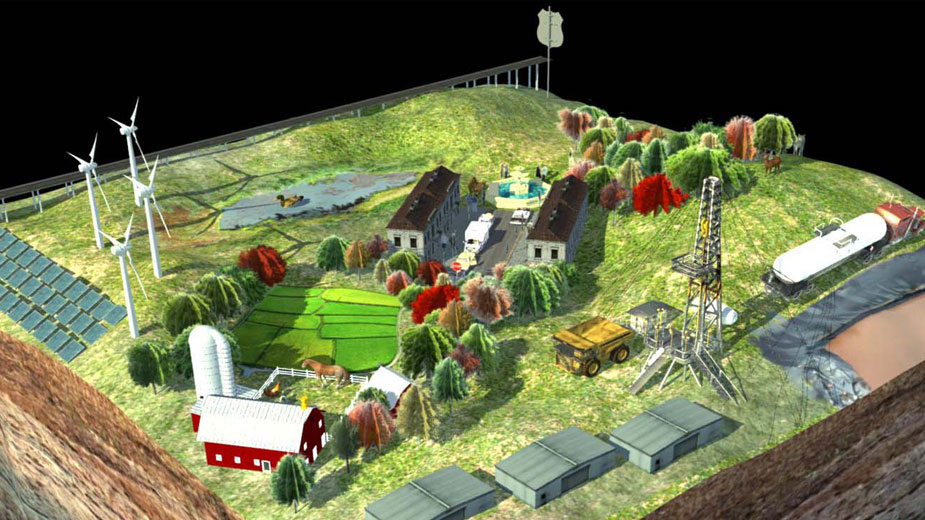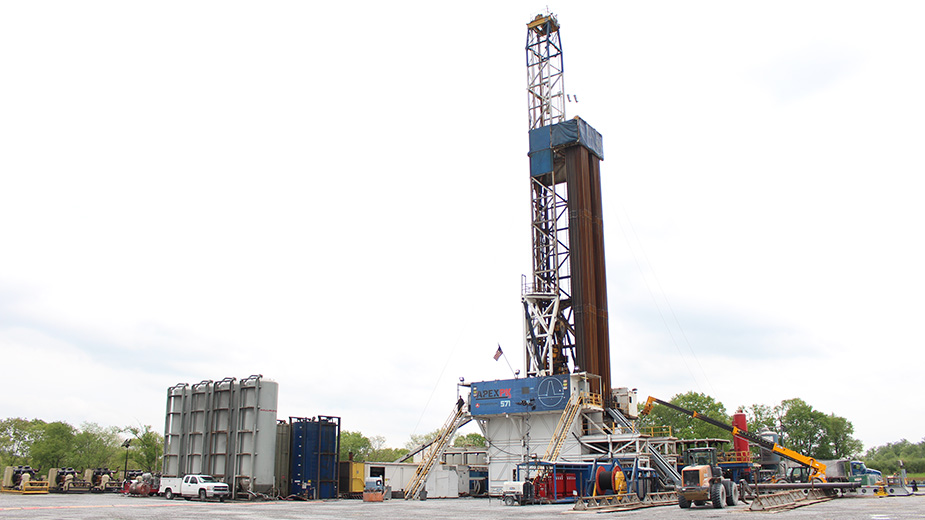Planning for Shale Development Focus of Website
By Matt Carroll, Penn State News Service
UNIVERSITY PARK, Pa. — A new website is giving people in rural Pennsylvania — and beyond — high-tech tools to learn about Marcellus Shale gas development in their backyards.
The website, Marcellus by Design, introduces some of the complex issues surrounding the industry’s development, and through interactive games and other resources, shows that communities can play a role in the process.
Penn State researchers will take the new technology to rural communities across the state this summer as part of “Marcellus Matters: Engaging Adults in Science and Energy,” a larger project that seeks to boost scientific literacy among adults.
“Our whole project is geared toward giving community members the knowledge they need to understand they can have impacts within their communities as far as development issues,” said Terry Noll, project coordinator and a researcher in Penn State’s Earth and Environmental Systems Institute.
Noll and her team have crisscrossed the state hosting discussions, lessons and field trips since the project started in 2012 with a $2.5 million grant from the National Science Foundation.
Now, with the website, they can reach more people than ever.
“We wanted to create a digital record,” said Timothy Murtha, a Penn State landscape architecture professor and a member of the Marcellus Matters project. “There are communities in Pennsylvania we haven’t had a chance to work with, or other places in the U.S., that can look at the planning that took place and some of the creative ideas our students had.”
The website, developed by Murtha and Brian Orland, a former Penn State professor now at the University of Georgia, is based partly on the work of Penn State landscape architecture students.
Their work seeks to show communities the environmental, economic, sociological and aesthetic factors that go into planning for energy development, and how to weigh these issues and make informed decisions about their land.
“We engaged in a series of design studies in landscape architecture and asked students to engage communities about things they found to be important in their landscape in the context of change,” Murtha said. “The students developed broad master planning ideas like how to reconcile wonders like the Pennsylvania Wilds and the energy industry’s need for natural gas extraction.”
Based on these conversations, the students created detailed story maps that examine how Marcellus development affected specific communities. The stories examine how development affects everything from tourism to water quality.
Also included on the website are interactive games, a history of energy industries in Pennsylvania, and interviews with diverse stakeholders in natural gas development, like well workers, environmental advocates and county planners.
“For us, it was how to get as much information from as many stakeholders as possible and bring it together and illustrate it to the community,” Murtha said. “Landscape planning is more than where to put a wellhead. There are lots of factors.”
Noll said people who attend her workshops are often surprised by how many variables there are when making landscape decisions about gas development. The website, with its interactive games and other resources, are a good start to putting the puzzle together, she said.
“I don’t think people understand that communities can state their desires,” Noll said. “They can work with gas companies to find what’s hopefully beneficial to both parties. We want them to understand that they can provide input during the process.”
Pictured: Graphic posted at site that depicts diverse rural activity atop shale gas resources.
Copyright 2024 The Business Journal, Youngstown, Ohio.



